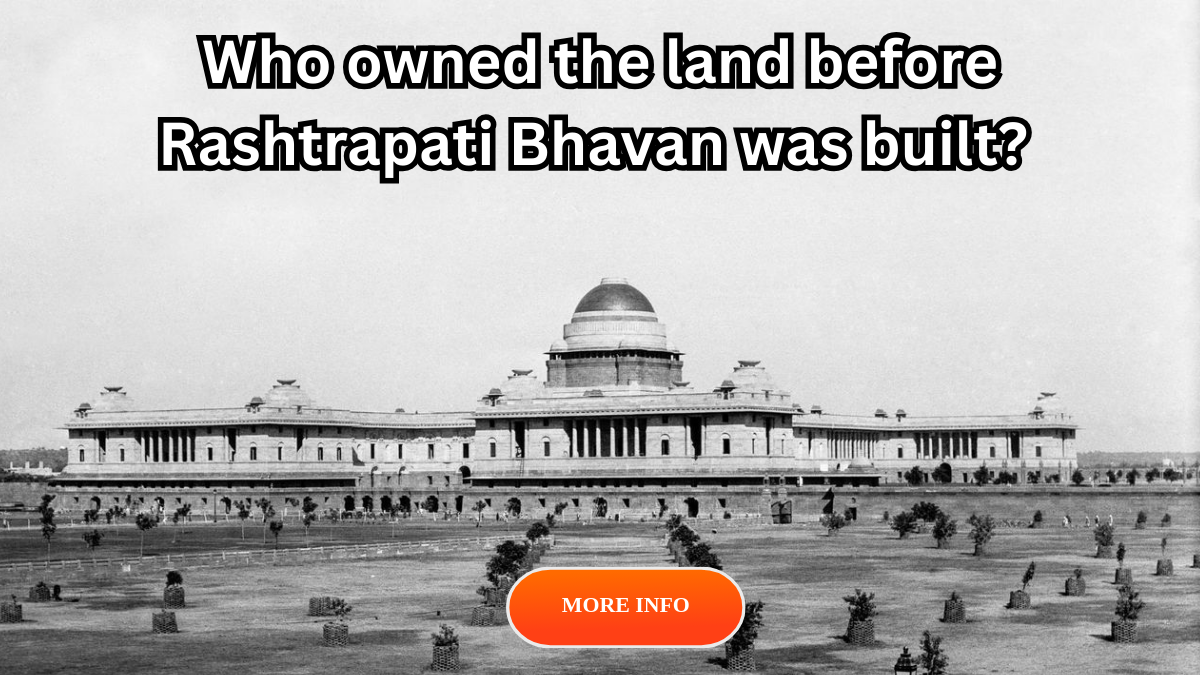Long before motorcades rolled up Rajpath (now Kartavya Path), Raisina Hill was dotted with tiny agrarian hamlets—about 300 families who lived off cattle and crops. In 1911, the British Crown decided to uproot its capital from humid Calcutta to the drier, more central Delhi. That single proclamation set a chain reaction in motion, bulldozing hills, blasting rocks, and rewriting India’s skyline.

Why Delhi? The Strategy Behind the Shift
| Strategic Goal | How Delhi Delivered |
|---|---|
| Geopolitical control | Central position on the subcontinent made governance—and troop movement—faster. |
| Imperial symbolism | Delhi’s Mughal heritage let the British piggy‑back on older empires’ prestige. |
| Climate & terrain | Elevated, breezy Raisina Hill offered healthier living than steamy Calcutta. |
In short, Delhi ticked every colonial checkbox: power projection, historic gravitas, and practical convenience.
Blueprint of a Behemoth
-
Master planner: Sir Edwin Lutyens
-
Key collaborator: Sir Herbert Baker
-
Design mantra: Blend the best of West with the soul of the East.
Architectural mash‑up
| European Inspiration | Indian Inspiration |
|---|---|
| Baroque symmetry & Neo‑Classical columns | Mughal jaali screens & chhatri pavilions |
| Grand ceremonial staircases | The Sanchi‑style ribbed dome |
| Formal state gardens (à la Versailles) | Charbagh motifs & red‑sandstone jharokhas |
Building the Colossus: 17 Years, One Railway, Countless Hands
-
Timeframe pitched: 4 years
-
Reality check: 17 years (1912‑1929)
-
On‑site railway: Laid to ferry Rajasthan’s sandstone & Makrana marble
-
Workforce: Thousands of masons, artisans, and laborers—mostly Indian—who chiselled colonial ambition into living stone.
Price tag: ₹1.3 crore—an astronomical figure in the 1920s, reflecting both scale and splendor.
Jaipur’s Gift: The Column That Greets You First
-
Donor: Maharaja Sawai Madho Singh II
-
Monument: The Jaipur Column (145 ft)
-
Symbolism: A princely salute to Delhi’s new status—still standing tall in the forecourt.
From Viceroy’s House to Rashtrapati Bhavan
| Era | Official Name | Resident & Role | Meaning for India |
|---|---|---|---|
| 1929‑1947 | Viceroy’s House | British Viceroy—Crown’s proxy | Beacon of colonial might |
| 26 Jan 1950‑today | Rashtrapati Bhavan | President of India—Head of State | Emblem of a sovereign republic |
The stone façade never changed; the spirit within transformed overnight on India’s first Republic Day.
Walking Through the Palace Today
-
340 rooms spread across two presidential floors
-
Durbar Hall under the iconic stupa‑inspired dome—venue for oath‑takings & Padma award ceremonies
-
Mughal Gardens (now Amrit Udyan): tulips, roses, and symmetry that would make Babur proud
-
Museum complex narrating 75 years of democratic milestones
Why Rashtrapati Bhavan Still Matters
-
Living symbol of democracy: The same corridors that echoed colonial orders now host India’s highest constitutional offices.
-
Architectural dialogue: East meets West without one eclipsing the other—a physical metaphor for India’s inclusive identity.
-
People’s palace: Annual garden openings and guided tours turn an erstwhile fortress of privilege into a shared national memory.
FAQs
-
Can the public visit Rashtrapati Bhavan?
Yes. Guided circuit tours and Amrit Udyan openings can be booked online; government ID is mandatory.
-
How large is Rashtrapati Bhavan?
The estate sprawls over 320 acres, with the main building alone covering about 200,000 sq feet.
-
Who was the first Indian to live here?
Dr. Rajendra Prasad, India’s first President, moved in on January 26, 1950.
-
What does the dome signify?
Inspired by the Sanchi Stupa, it symbolizes continuity—from ancient Buddhist architecture to modern Indian governance.
From a colonial showpiece to the heartbeat of the world’s largest democracy, Rashtrapati Bhavan mirrors India’s own journey—grand, layered, and ever evolving.
Click here to learn more
Pari is a passionate writer known for captivating stories that blend imagination and reality. Inspired by travel, history, and everyday moments, Pari crafts narratives that resonate deeply with readers.


